Gender Roles and Sexism in Modern Shoujo Manga
Unfortunately, our society is built over a misogynistic anti-feminist structure that is based on a binary perspective of genders and their roles. Imposing different social places and behaviors for each gender and oppressing what does not fit in. Japan is not an exception – in fact, it is a study in contrasts.
During a certain afternoon in October, it came to my attention that Akiko Higashimura’s newest work -HIMO ZAIRU- was put on hold due to online criticism. The author, which already has a fairly successful piece on the market (Kuragehime), created a story about men who are financially dependent on women:
“No money, not popular, no job. Because I’m useless at best, I’ll become a himo! The curtain rises on Akiko Higashimura’s himo-man training dojo!” A himo is a man who doesn’t work and who is financially dependent on the women he goes out with. The website for the Asahi Shimbun newspaper added that she created the manga with her male assistant and other men around her as models. The newspaper also added that critics had accused Higashimura of “looking down on her assistant and other men.”
Now, it is interesting to analyze this kind of reaction: why were men so bothered over this particular story, to the point of canceling it? The answer is simple: Himo Zairu is a shoujo manga that did not follow the rules.

Sexism and Feminism in the Anime Industry
Let’s start from the beginning: Japan is a study in contrasts – while it has a very liberating form of art such as manga, the society does not seem to keep up with it: While the manga market is an extremely vast and varied world, full of works from all kinds, the Japanese society is still very conservative when it comes to gender roles (set of societal norms dictating what types of behaviors are generally considered acceptable, appropriate or desirable for a person based on their actual or perceived gender.).
I dare say that it’s even more conservative than the current western society. So how can a market that publishes titles that the western world are still struggling to accept (LGBTTQ characters protagonizing their own stories, women as protagonists of their own adventures, all kinds of non-conventional sexual fantasies, etcetera) still be so conservative at the same time?
It’s because the manga market sells a false idea of variety while still holding onto conservative and sexist values. Let me say that again: Sexism in manga is a real thing. You don’t even have to read manga to notice that. Let’s take a look at some of the currently used “Manga Genres” and what they mean:
- ♦ SHOUNEN MANGA (少年漫画 shōnen manga) is manga aimed at a teenage male audience.
- ♦ SHOUJO MANGA (少女漫画 shōjo manga) is manga aimed at a teenage female readership.
- ♦ YAOI/BL (/ˈjaʊi/, Japanese: [ja.o.i]), also known as Boys’ Love (BL) is a Japanese genre of fictional media focusing on romantic or sexual relationships between male characters, typically aimed at a female audience and usually created by female authors.
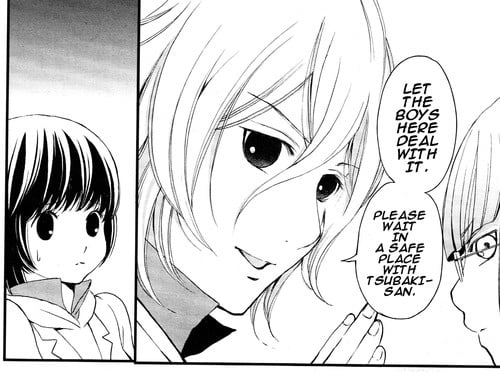
Strictly speaking, those are not exactly genres. The market separates the titles by target audience. While western society suffers with lack of minority representation due to using actual genres as a division standard (Romance, Action, Adventure, Thriller) AND considers the White Male Protagonist as the default, universal character that everyone will consume over, the manga market struggles on letting go of the stereotypes created by gender-basing their titles, reinforcing gender prejudices and values that should have been overcome by now.
The focus of this article will be the issue of gender roles in Shoujo Anime/Manga and the lack of feminism in the industry.
Sexism in Shoujo Anime & Manga
Shoujo manga targets young girls specially. It is predominantly female, from authors to readers. Such obvious separation leads to common questions: what would girls like to read? The result is a vast majority of sugary high school romance stories with very stereotypical characters and plots.
If you are a Shoujo Anime/Manga consumer, you must have come across at least one of these phrases:
Guy: You can’t [insert any reason/action here], you are a girl!
Guy: I have to protect you.
Guy: Girls should be cute!
We have a text representation of three problems that sexist societies face everyday, that shoujo media usually insists on reinforcing in a sometimes very, VERY subtle way.
1. Lack of Female Dominance
The idea that women are somewhat physically or emotionally incapable of something because they are girls or should/should not be doing something or act in a certain way because they are girls. This is so subtly engraved in modern shoujo manga that if you don’t want to notice it, you won’t.

2. Overt Male Dominance
The idea that girls need to be protected. The male-female relationship is the prime plot device in every shoujo manga, you will rarely find one that does not portray this interaction. The vision of a girl that wants to be protected and the “strong” male character that protects her is one of the most used stereotypes in modern manga. This arrangement often leads to an excessively dominant male partner. You may not think this is sexism in manga, but it is.
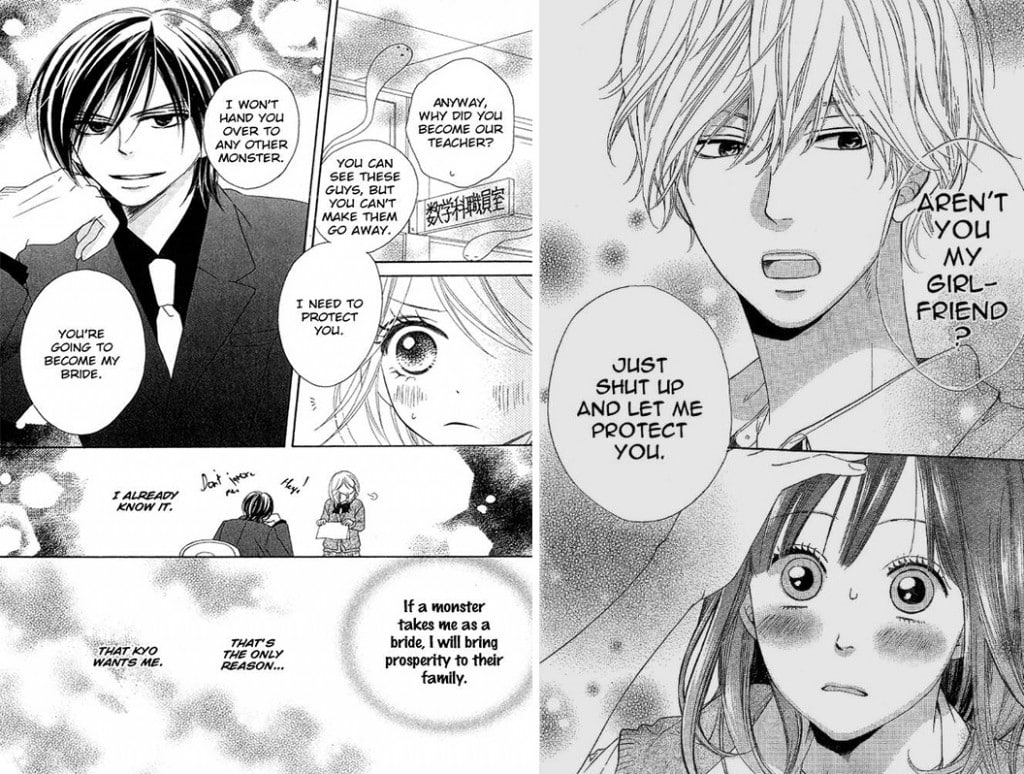
The Prince and the Devil
The depiction of the male character in shoujo manga has interesting developments to say the least. It is possible to narrow it down to two main dominant personality spectrums: The Prince and the Devil. The Prince is the perfect, handsome, desirable guy that every woman wants. They may or may not have a secret twisted personality. The Devil is usually an underdog violent or cold guy, that usually has a borderline abusive behavior towards the female protagonist. Both of these stereotypes can be a problem.
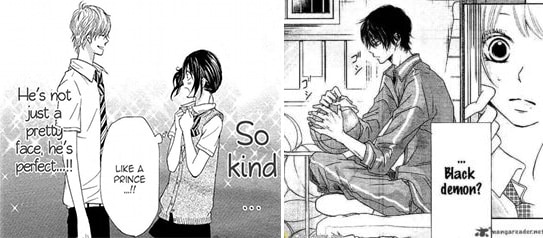
The Prince is Problematic because – Reinforces the idea of a male that will protect the main character from anything. It is based on dated concepts of chivalry or romanticism. When the prince has a twisted personality, it starts to act like the Devil:
The Devil is Problematic because – Perhaps it is one of the most common personality spectrums in modern shoujo manga, and it is equally one of the most dangerous concept there is: the concept of male dominance is the focus. The characters are usually rude, possessive, jealous or cold and often abusive to the receiver of their affection, the female protagonist.
In this case, it is default to sell commonly known emotional and physical abuse as sexy, romantic and desirable. While the western world discusses abuse behavior in Fifty Shades of Grey, the manga market has been using abuse as a plot device for much longer. Either way, the notion that cruel, possessive and aggressive behaviors are synonymous of love is very poisonous specially to young girls who are starting their love lives.
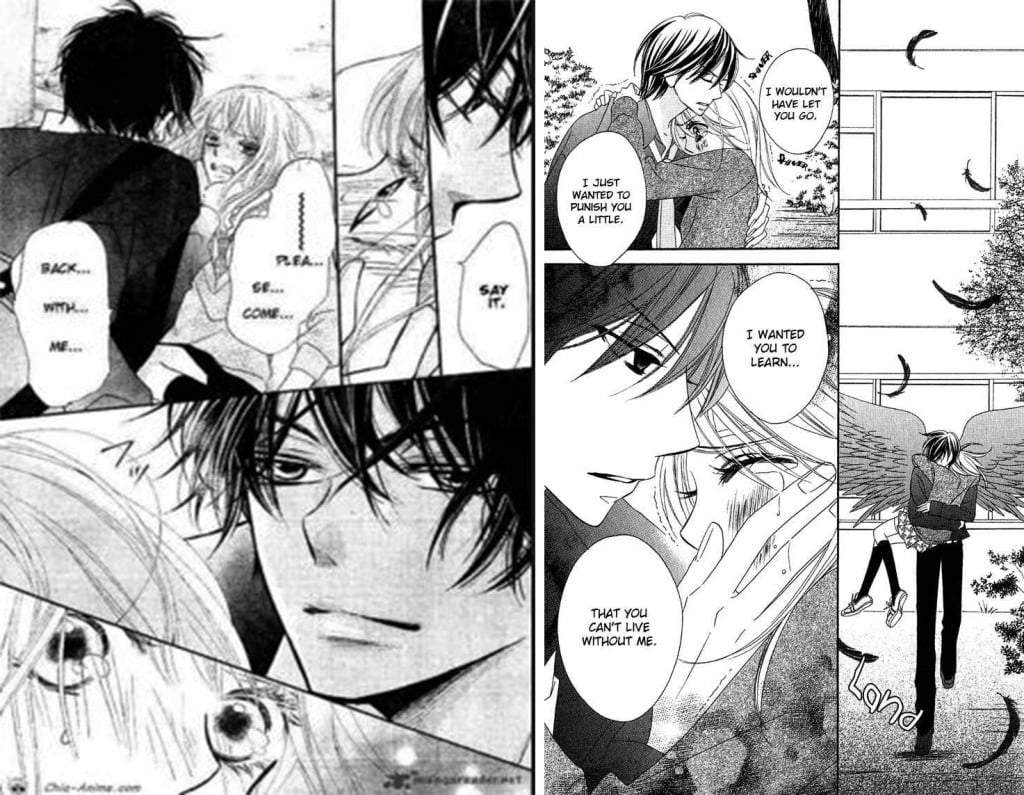
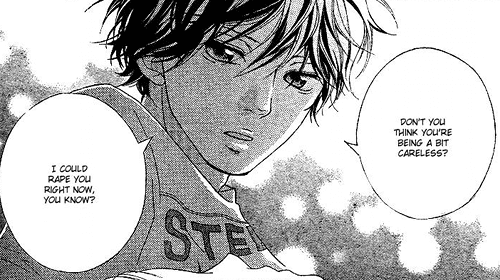
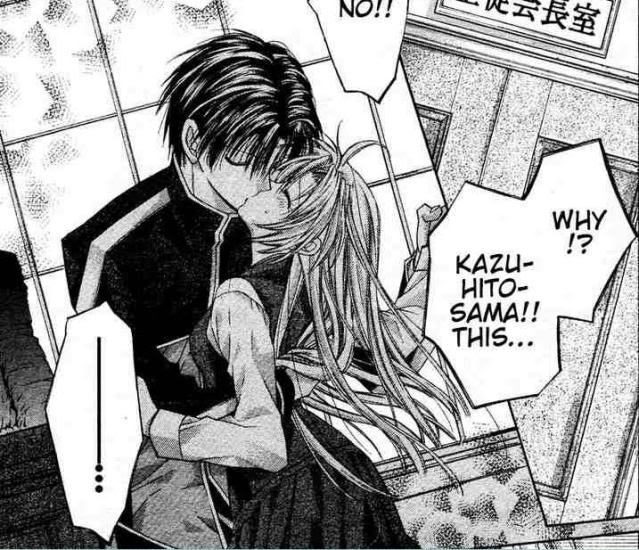
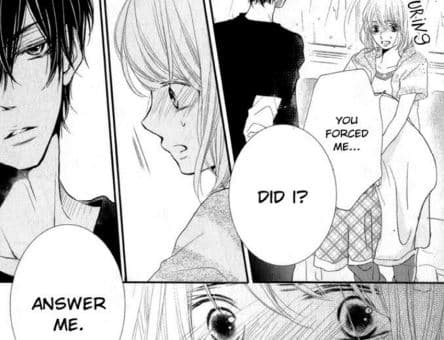
Sexual Harassment in Anime
It is also important to notice how the concept of street harassment is put into a different light from the harassment made by the protagonists. Street Harassment is often used as a plot device so the vulnerability of the female character becomes more evident, and it is usually viewed as a nasty, negative action (and they are often saved by the male protagonist). When the male protagonist performs the same or even worse harassment acts, it is always put as a comic relief or with a touch of “romance”. It’s a double standard.
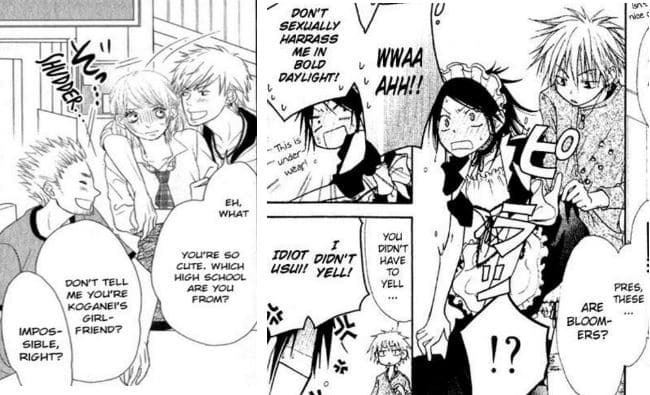
3. Body Image and Vanity in Anime
The idea that women need excessive vanity. Shoujo manga usually appeals on the idea of cute and how should a girl be cute. When it’s not the case, the girl protagonist is beautiful, stylish or cool. It is a common plot for shoujo manga to have an ugly, creepy or fat protagonist that ends up “becoming cute” for any number of reasons: rejected by a popular or secondary male character drives her to change her appearance or she is helped by a popular handsome boy, between some other reasons.
The fact is, the physical attribute of the woman is her “value” meter in the end, and submission becomes a quality to be admired. Of course we have some excellent exceptions, but for bad or for worse, the vast majority of shoujo manga reinforces the concept the appearance as something a girl should care excessively about.
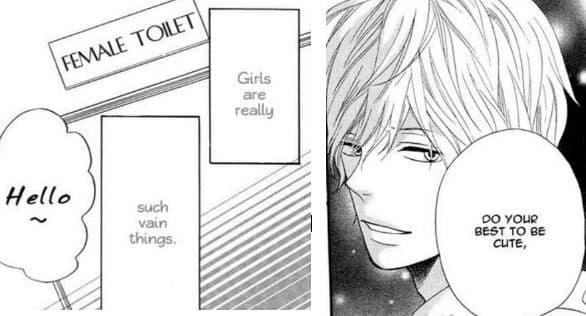
So Now What?
Shoujo Manga represents a big conquer when it comes to female authorship and market space. However, it is still trapped in meaningless stereotypes of what a woman should be and how she should behave, as well as the romanticization of abusive behaviours. Sexism in manga is here. As women, we can not be deceived by false ideas of representation. To have such a big market dedicated to females should be more focused on bringing more female-centered self esteem (and not by validation of a male counterpart), instruction and most importantly: empowerment.
So I challenge you, dear shoujo manga reader, to pay more attention over the small things that makes shoujo manga so problematic today. And I invite you all to give more value to the works that challenges representation, gender roles and sexism in modern manga.
Happy reading!
Joanacchi


